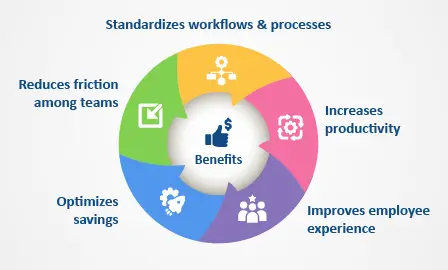
In today’s technology landscape, enterprises are evolving to stay relevant as the competition looks to take a bit out of their market share. Automation and orchestration are necessary evils that will help companies stay competitive and take advantage of latest tools to produce more, reduce costs, and minimize risk.
So, which one should you do? Orchestrate for automation, or automate for orchestration? Wait, what??
Even though the terms automation and orchestration are used interchangeably, there is a distinct difference between them. Both terms essentially mean streamlining processing or tasks to do the most amount of work, in the least amount of time, with the lowest cost and reduction in errors.
Automation and Orchestration: What are they?
Automation is configuration and execution of a series of processes without intervention. A variety of automation tools are available for such occasions. For example, infrastructure deployment and configuration using Infrastructure-as-Code (IaC) can build entire Development and Production environments and then de-provision when necessary or scale up/down as traffic patterns necessitate.
Such tools can also be used for automating backups, patching and security remediation, and run a variety of mundane and repeatable tasks where human capital can be diverted to more productive venues. However, they are often Cloud-specific and not easily cross-collateralized.
Orchestration, however, is the organization of automation tasks into a complete workflow. It includes monitoring, managing, and integrating of all tasks and automated jobs, across diversified environments; Cloud and on-premises alike, maximizing IT ROI.
These tools can be inclusive of automation tasks, meaning they can both automate and orchestrate the entire workflow to achieve greater results. Many orchestration tools are multi-Cloud-compatible and even integrate with Cloud-based CRM and ERP platforms.
What is the difference?
Well, in my humble opinion, these two are yin and yang! It is not really a which-one-do-I-need discussion, but rather when you will add orchestration to automation. With the ever-increasing infrastructure footprint for today’s Enterprise, it has become nearly impossible to keep track of all the automation tasks that run in all environments. Scripting is great for automating individual or group of tasks, and something that will probably outlive all of us. But as applications, infrastructure, and security services scale, more automation tools will need to be leveraged, either native, 3rd-party, or a combination of the two.
Given that more services are becoming distributed across multiple vendors, automation tasks often don’t enjoy the same diversity. This means an additional layer in form of a chaperon is needed to ensure all automation is running when and as they’re supposed to and alert a human or kick off automated remediation, called the orchestrator.

Which do you need?
Both, actually! With an ever-growing complex IT ecosystem, tools are increasing more in complexity, number of vendors offering integrated automation and orchestration tools are also rising, blurring the lines even further.
“Customers are striving toward an orchestrated, end-to-end, intelligent, event-driven form of automation, delivered with an effective combination of automation tools with multiple machine learning applications and packaged software.”
– Gartner, Magic Quadrant for Robotic Process Automation
Examples of automation in infrastructure
1. Entertainment – Netflix:
- Automation before you press Play : This video gives an eye-opening view into the automation that is put in place before video is ready to be streamed into our device. It is a fascinating workflow that has been done by code, to maximize the enhanced viewing experience.
- Netflix Automated testing on devices : This blog goes into details about how Netflix is using the automated testing on devices such as Xbox and PlayStation, Roku, and others to ensure an optimal viewing experience where there is no chance of re-releasing code without engineering costs on both Netflix and device manufacturers.
2. Social Media – Facebook:
- Infrastructure Self-Healing : Facebook has been a pioneer in the automation space, and the above article demonstrates how they are using open-source software to automate maintenance of 1000s of servers, including software and hardware failures without human intervention.
- Automate & Abstract : An excerpt from the article basically summarizes the gist:
“Facebook is able to automate failover across machines, preemptively move workloads before a server or rack becomes overloaded, and even automatically remediate certain server errors before they become bigger problems.” Say no more!
Bottom line
There is no simple answer to automation or orchestration. To determine what makes sense for the organization, stakeholders must look at the broader business and technology roadmap, prioritize based on need and budget, engage with the right partner who “has been there and done that” to achieve the best ROI. But to achieve that maximum ROI, organizations must use orchestration to automate tasks and integrate them into their IT workflows. This requires buy-in from everyone involved and commitment to working together to achieve the end goal.






